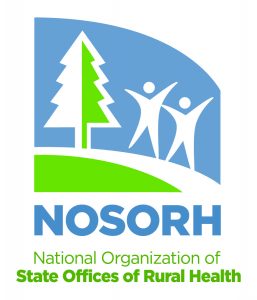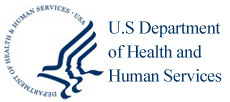- CMS: Medicare Program; Implementation of Prior Authorization for Select Services for the Wasteful and Inappropriate Services Reduction (WISeR) Model
- Public Inspection: CMS: Medicare Program: Implementation of Prior Authorization for Select Services for the Wasteful and Inappropriate Services Reduction Model
- CMS: Secretarial Comments on the CBE's (Battelle Memorial Institute) 2024 Activities: Report to Congress and the Secretary of the Department of Health and Human Services
- HHS: Patient Protection and Affordable Care Act: Marketplace Integrity and Affordability
- HRSA Announces Action to Lower Out-of-Pocket Costs for Life-Saving Medications at Health Centers Nationwide
- Public Inspection: HHS: Patient Protection and Affordable Care Act: Marketplace Integrity and Affordability
- Increased Risk of Cyber Threats Against Healthcare and Public Health Sector
- Eight Hospitals Selected for First Cohort of Rural Hospital Stabilization Program
- Announcing the 2030 Census Disclosure Avoidance Research Program
- CMS: Medicare Program; Hospital Inpatient Prospective Payment Systems for Acute Care Hospitals and the Long-Term Care Hospital Prospective Payment System and Policy Changes and Fiscal Year 2026 Rates; Requirements for Quality Programs; and Other Policy Changes; Correction
- CMS: Medicare Program; Hospital Inpatient Prospective Payment Systems for Acute Care Hospitals and the Long-Term Care Hospital Prospective Payment System and Policy Changes and Fiscal Year 2026 Rates; Requirements for Quality Programs; and Other Policy Changes; Correction
- CMS: Medicare and Medicaid Programs; Contract Year 2026 Policy and Technical Changes to the Medicare Advantage Program, Medicare Prescription Drug Benefit Program, Medicare Cost Plan Program, and Programs of All-Inclusive Care for the Elderly; Correction
- CMS: Medicare and Medicaid Programs; Contract Year 2026 Policy and Technical Changes to the Medicare Advantage Program, Medicare Prescription Drug Benefit Program, Medicare Cost Plan Program, and Programs of All-Inclusive Care for the Elderly; Correction
- CMS: Medicare Program; Prospective Payment System and Consolidated Billing for Skilled Nursing Facilities; Updates to the Quality Reporting Program for Federal Fiscal Year 2026
- CMS: Medicare Program; FY 2026 Hospice Wage Index and Payment Rate Update and Hospice Quality Reporting Program Requirements
2020 Census Rural Count Adapts to Covid-19

By Donna Kallner
Making sure rural areas are counted accurately is a challenge in the best of times. In 2020, the U.S.Census Bureau’s operations have had to adapt.
Analysis: How Covid-19 in Prisons and Jails Threatens the Surrounding Community

By Michael Ollove
Rural counties with prisons have seen some of the highest coronavirus infection rates in the United States. Protecting the incarcerated population is also an important step toward protecting the health of nearby communities.
HHS Releases Millions for RHCs Left Out of Initial Provider Relief Fund Distribution

On June 25, 2020, the Department of Health and Human Services released more than $50 Million dollars in Relief Fund payments to Rural Health Clinics (RHCs) that were left out of the original May 1 RHC distribution. This money is in addition to the more than $500 Million distributed to all other RHCs in early May.
“We are pleased that our advocacy efforts on behalf of these RHCs has paid off,” said Bill Finerfrock, Executive Director of the National Association of Rural Health Clinics.
On April 22nd, the Secretary Alex Azar announced that the Department of Health and Human Services was reserving $10 Billion of the $100 Billion authorized by Congress for Provider Relief Payments, for Rural Health Clinics and Rural Hospitals. True to their word, a few weeks later, thousands of RHCs received money from the COVID-19 Provider Relief Fund.
It quickly became apparent that due to unknown problems with the way CMS maintained the official list of RHCs and the formula used by HHS to determine RHC eligibility for payments, many RHCs that should have been eligible did not receive any money from this fund. Immediately upon learning of this oversight, NARHC reached out to HHS Leadership to make them aware of the problem and express our desire that HHS correct this oversight.
For the past 6 weeks, NARHC has been working with HHS leadership and senior staff at the Federal Office of Rural Health Policy to identify the RHCs that were left out of the original distribution and secure the funds necessary to make Provider Relief Payments to these RHCs.
Each RHC in this 500+ group received, on average, slightly more than $103,000. Payments were distributed to RHCs that have an electronic banking relationship with CMS. RHCs that do not have an electronic banking relationship with HHS should be receiving a check in the mail within 7 – 10 days (depending on mail service). RHCs owned by hospitals in “urban” areas should check with their parent hospital entity to verify that this payment was received.
NARHC would like to thank the leadership at HHS and in particular, the staff at the Federal Office of Rural Health Policy (FORHP), who worked diligently with NARHC to identify those RHCs that were overlooked.
New Brief: Identifying Vulnerable Rural Populations During COVID-19: The CDC’s Social Vulnerability Index

The National Organization of State Offices of Rural Health (NOSORH) has released a new Issue Brief: Identifying Vulnerable Rural Populations During COVID-19: The CDC’s Social Vulnerability Index
Social vulnerability refers to a community’s capacity to prepare for and respond to the stress of hazardous events — including natural disasters and pandemics. The Centers for Disease Control and Prevention (CDC) has created a multifactor Social Vulnerability Index (SVI) which can be used to identify vulnerable rural populations at greatest risk of impact by hazardous events. The SVI is calculated at two levels — one set of variables for all US counties and a second set for all US census tracts — and updated bi-annually.
The SVI can be useful in planning efforts to prevent and respond to COVID-19 infections in local communities. The NOSORH COVID-19 Data Tool includes the latest SVI data displayed in a visual format. Overlaying the SVI data layers with other available layers aids in the identification of high need areas, assisting in delivery of resources where they are most needed.
Pennsylvania Health Department Releases Revised Guidelines for EMS
The Pennsylvania Emergency Health Services Council has distributed two guidelines for EMS providers on PPE and the Department of Health’s Universal Face Coverings Orders. Both documents can be accessed below.
National Practitioner Data Bank (NPDB) Extends Query Fee Waiver
The National Practitioner Data Bank (NPDB) is extending the query fee waiver for one-time queries, continuous queries, and continuous query renewals retroactive from June 1 through September 30. The NPDB previously offered the waiver through May 31. The waiver supports efforts to mobilize and deploy health professionals during the COVID-19 pandemic by reducing costs and expediting credentialing, hiring, privileging, and licensing processes.
For updated information about the waiver, visit the Coronavirus (COVID-19) Information page on the NPDB website.
For technical assistance, contact the NPDB Customer Service Center.
Medicaid/CHIP Provider Relief Fund Payment Forms and Guidance Announced

HHS, through the Provider Relief Fund, expects to distribute $15 billion to eligible Medicaid and CHIP providers.
Providers must submit their data by July 20.
Before applying through the Enhanced Provider Relief Fund Payment Portal applicants can watch a webinar about the application process for Medicaid/CHIP providers (registration required).
An additional webinar is scheduled for Wednesday, July 8 at 4:00 pm EDT. Register today.
Pennsylvania Department of Community Economic Development Releases Neighborhood Assistance Program Guidelines
The COVID-19 Pandemic has had an immense, unprecedented impact on the people and economy of Pennsylvania. Businesses have closed, people have lost their jobs, and life in general has been severely disrupted. Within the most vulnerable communities of Pennsylvania the impact of this pandemic has been exacerbated by the ongoing conditions of social injustice, poverty, and neglect. Due to the effects of this situation on the people and economy of Pennsylvania there will be a special emphasis on and priority given to projects that seek to address critical issues related to the pandemic and its aftermath for program year 2020-2021. Within these guidelines there are activities highlighted as being priorities for COVID-19 Pandemic and Social Justice Issues. While some of these priorities are based on individual services many of them are more community focused as it will take the efforts of entire communities to fully recover from this historical event.
Applicants who are planning to submit applications that address these critical needs are encouraged to do so when the NAP application is opened. The Department reserves the right to determine whether a project qualifies as a priority under these special circumstances. Those projects deemed not to be a priority will be considered after all other priority projects have been awarded if there are any tax credits remaining.
Please follow the link for more information.
Governor Urges Pennsylvanians to Avoid Large Gatherings, Wear Masks Over Holiday Weekend
As the holiday weekend approaches, Pennsylvania Governor Wolf’s Administration is reminding Pennsylvanians to avoid large gatherings and to wear masks around other people to help prevent further spread of COVID-19. On July 1, Governor Tom Wolf announced an order, signed by Secretary of Health Dr. Levine, requiring masks to be worn whenever anyone leaves home.
On July 3, Lebanon County, the remaining county still in yellow, will join the green phase with the rest of the state. The green phase prohibits large gatherings of more than 250 people. The newly expanded mask-wearing order also requires mask-wearing in any public space, not just in businesses.
If you have traveled, or plan to travel, to an area where there are high amounts of COVID-19 cases, it is recommended that you stay at home for 14 days upon return to Pennsylvania. If you travel to the following states, you will need to quarantine for 14 days upon return:
- Alabama
- Arizona
- Arkansas
- California
- Florida
- Georgia
- Idaho
- Louisiana
- Mississippi
- Nevada
- North Carolina
- South Carolina
- Tennessee
- Texas
- Utah
Pennsylvanians are encouraged to continue to practice social distancing and other preventive measures, including washing your hands frequently, covering coughs and sneezes, cleaning surfaces often, wearing a mask and staying home if you are sick to help reduce the spread of COVID-19.
New COVID-19 Tracking Tools Reveal County, State, & Global Trends

The COVID-19 Map Series is a searchable data base offering data of confirmed COVID-19 cases, county trends, number of days since last new case, recent outbreaks, mortality rates, active cases per 100,000 people, deaths per 100,000 people, and more in each of the nation’s counties. The data is collected by Johns Hopkins University CSSE, and also appears in their US Cases by County Dashboard. Due to frequent changes, it is advised that users refresh their browsers often when viewing the map. As of today, July 2nd, at 10:30 am (ET), there were 110,639 cases in 418 Appalachian counties.
For more information about COVID-19 trends, visit the Country Level Trends Story Map for global data and check out the full methodology for details.
